|
|
Volume 9, Issue 5, January 2023
Urban and Innovative Agriculture

|
|
|
Farm to School Program grantees know that it takes creativity to grow food in urban spaces. From vertical and container gardens to hydroponic and aquaponic systems, urban and innovative agriculture strategies are an important part of farm to school programming across the country. Check out these four Farm to School Program grantees supporting urban and innovative agriculture in the southeast:
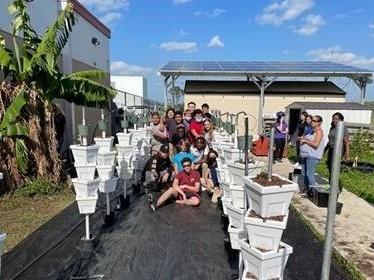
Lee County School District, a Fiscal Year (FY) 2022 grantee based in Fort Myers, Florida is helping local schools launch and maintain hydroponic growing systems. Island Coast High School in the district has a nine-year-old outdoor hydroponic and aquaponic system which yields peppers, tomatoes, lettuce, cucumbers, herbs, flowers, and more. Island Coast High School is now teaching four other schools in the district how to set up and maintain hydroponic gardens. The schools are also incorporating the hydroponically grown produce into their school meals.
|

The Star of the Sea (SOS) Foundation, a FY 2022 grantee based in Key West, Florida uses an aeroponic tower garden system to give students hands-on growing opportunities. This innovative gardening system serves as a solution to the lack of agricultural space and fertile soil in the Florida Keys. Students in the SOS foundation’s Farm to School Program also recently visited a tropical fruit grove focused on growing the climate-resilient breadfruit tree. They got to taste breadfruit in various forms including muffins, cookies, and chips.
|
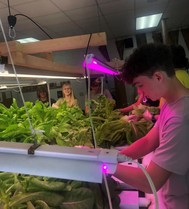
The Alabama Department of Agriculture and Industries (ADAI), a FY 2022 grantee based in Montgomery, Alabama, is supporting the Marshall County School System’s K-12 hydroponic growing efforts. The school’s hydroponic growing is led by the Daughters of the American Revolution Future Farmers of America. In August 2022, the school harvested their first hydroponic lettuce of the year. Past harvests have included watermelons, tomatoes, and more. All foods that Alabama schools harvest and incorporate into school meals are eligible for a $0.20 per meal component reimbursement through the ADAI Farm to School Incentive Program.
|

Duval County Public Schools, a FY 2022 grantee based in Jacksonville, Florida is developing a plan to improve their existing aquaponic growing system. They are conducting site visits across Florida to help them decide how to implement a more sustainable and scalable system. Once they have a new and improved aquaponic system in place, they aim to launch a farm-to-table education initiative that doubles as a school-based enterprise and supports career pathways in aquaponics for their community partners.
These are just a few examples of the many ways Farm to School Program grantees are integrating urban and innovative agriculture into their programs!
|
|
|
Celebrating National Milk Day
On January 11th, USDA celebrated National Milk Day to commemorate the first time milk was delivered to homes in sterilized glass bottles back in 1878. Whether milk is consumed out of a glass bottle or from a milk carton, it has become an important meal component in USDA’s Child Nutrition Programs. Milk is rich in calcium, vitamin D, and protein, making each sip full of nutrients that support growth and development! Milk is also a common item schools procure locally. According to the 2019 Farm to School Census, fluid milk was the local item served most frequently in school meals. Fifty seven percent of School Food Authorities that participate in Farm to School activities reported serving local fluid milk and eighty seven percent reported doing so daily.
Test your knowledge with a quiz and check out some resources and tools from USDA’s Team Nutrition on serving milk in the Child and Adult Care Food Program (CACFP):
|
|
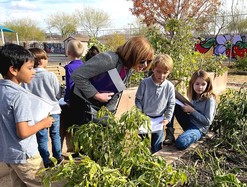 |
|
New Blog Post from FNS Administrator: Passionate About Good Nutrition for Kids
USDA FNS administrator Cindy Long shared insights about her passion for child nutrition in a new blog post. She discussed her efforts to ensure children have consistent access to healthy nutritious meals. She also highlighted the ways States across the country have made free school meals available to all children.
|
New Study on School Garden-Based Nutrition, Cooking Interventions, and Child Health
According to a new study published in The Journal of American Medical Association Network Open, school garden-based interventions can improve blood sugar and reduce bad cholesterol in children. This research program provided 3,302 children at low-income elementary schools with majority Hispanic students innovative ways to learn about school gardens, nutrition, and cooking interventions. The researchers measured the effects of the program on childhood obesity markers, dietary intake, diet related behaviors, physical activity levels, and school performance. The study found a reduction in blood sugar levels and a reduction in bad cholesterol, indicating a reduced risk of diabetes and prediabetes among the target population. Based on the results, the authors recommend more elementary schools include garden-based interventions in their curriculula.
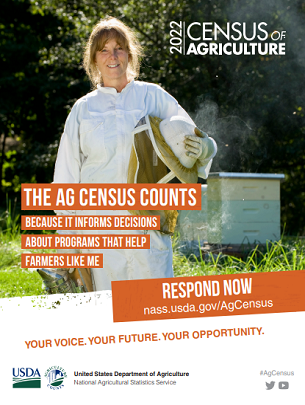
Last Chance to Complete the 2022 Census of Agriculture
In November, USDA’s National Agricultural Statistics Service (NASS) mailed invitations to respond to the 2022 Census of Agriculture to agricultural producers across the nation. Producers can respond online or via mail by February 6, 2023. The Census of Agriculture data will impact decisions that will shape the future of American agriculture for years to come. Please join NASS in encouraging producers to respond by amplifying NASS’s messages on social media and sharing census information with producers and your partners. Visit NASS’s Partner Tools site for census outreach resources.
|
|
|
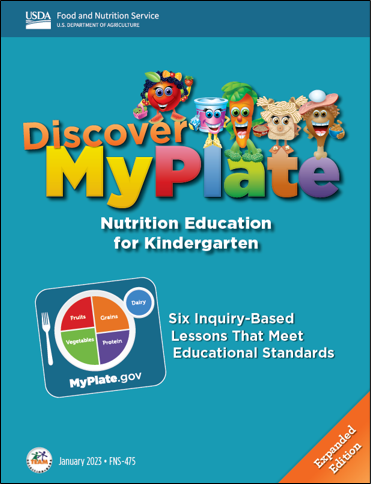
USDA Team Nutrition Releases New Nutrition Education for Kindergarten Resources
New and updated Discover MyPlate: Nutrition Education for Kindergarten materials are now available from USDA’s Team Nutrition initiative! These fun resources foster the development of healthy food choices and physically active lifestyles during a critical developmental and learning period for children—kindergarten. The expanded resources include recipes, food cards, emergent reader mini books, and lessons that meet educational standards.
|
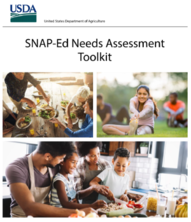
USDA Releases SNAP-Ed Needs Assessment Toolkit
The USDA Food and Nutrition Service (FNS) recently released the new Supplemental Nutrition Assistance Program-Education (SNAP-Ed) Needs Assessment Toolkit. The Toolkit aims to help SNAP State agencies meet program requirements and enhance their existing needs assessment capabilities. The toolkit offers suggestions to increase the diversity of voices involved in the needs assessment process and strategies to link needs assessment findings to State goals and SNAP-Ed programming. In addition to the Toolkit, FNS held two webinars to discuss the purpose of SNAP-Ed needs assessments and the roles State agencies play in the process. The webinars included highlights from the SNAP-Ed Needs Assessment Toolkit, explored benefits and challenges of ways to organize needs assessments, and more!
|
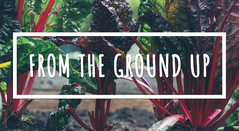
Subscribe to From The Ground Up, a USDA Local & Regional Food E-Letter
To stay plugged into local and regional food news, sign up to receive the USDA Agriculture Marketing Service (AMS) monthly e-letter, From The Ground Up. Each edition features news and notes on USDA AMS work related to local and regional food systems including new resources, grantee highlights, and relevant research, tools, and data. Visit the Local Food Research and Development webpage to learn more about the AMS Local and Regional Foods Division and view past newsletters here.
|
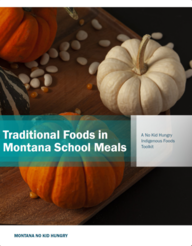
Indigikitchen and No Kid Hungry Toolkit: Traditional Foods in Montana School Meals
Indikitchen, an online cooking show dedicated to re-indigenizing diets using digital media, and Montana No Kid Hungry recently partnered to release a Toolkit for Traditional Foods in Montana School Meals. This toolkit aims to help school food service directors identify, procure, and incorporate traditional, healthy foods into school meals. It also serves as a tool to educate those interested in traditional foods about American Indian nations and tribal communities in Montana. The toolkit includes crediting information for common traditional foods, standardized recipes, and more!
|
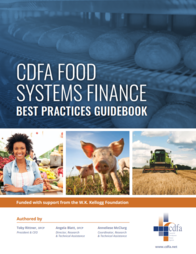
CDFA’s Food System Finance: Best Practices Guidebook
The Council of Development Finance Agencies (CDFA) recognized the challenges that communities face trying to link development finance and food systems. CDFA’s Food System Finance: Best Practices Guidebook details how traditional development finance tools can be used to launch and expand food and agricultural-related businesses and projects to create successful food systems finance programs at the local and regional levels. The guidebook provides a brief introduction to development finance and food systems, as well as examples of successful food systems finance programs.
|
New Farm to Early Care and Education State Resource Directory
The National Farm to School Network recently released a new Farm to Early Care and Education (ECE) State Resource Directory. The directory compiles farm to ECE resources developed by State farm to ECE partners across the country. Resource categories include Curricula and Activities; Farm to ECE Incentive, Promotion, Mini-Grant, Pilot Programs; Local Food Procurement, Preparation, and Food Safety; Success Stories; Training Materials; and more!

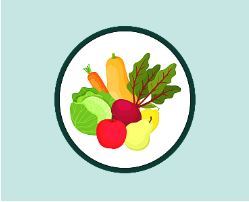
USDA Releases SNAP Electronic Healthy Incentives Pilot Request for Applications
USDA will select up to three States to receive funding and support to run an Electronic Healthy Incentives Pilot, or eHIP, for SNAP participants in their State. Incentive programs encourage SNAP recipients to purchase healthy foods by providing a coupon, discount, gift card, bonus food items or extra funds when they buy specific foods, such as fruits and vegetables. Through the eHIP projects States will test different SNAP incentive program models. State applications are due March 31, 2023.
|

|
|
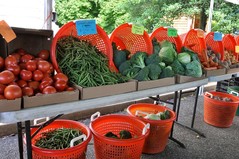
USDA Awards Senior Farmers’ Market Nutrition Program Grants
USDA awarded $50 million in noncompetitive grants to State agencies that implement the Senior Farmers’ Market Nutrition Program (SFMNP). States will use the funds to improve the use of SFMNP benefits at farmers’ markets, roadside stands, and community supported agriculture programs by modernizing customer service and improving program access. The SFMNP makes fresh fruits, vegetables, herbs and honey accessible to seniors in 48 States, Puerto Rico, and eight tribal areas.
|
The Dirt is a monthly publication of USDA Food and Nutrition Service, Farm to School Program, providing news and resources for former, current, and future Farm to School grantees, and for all readers who want to know what is new and exciting in farm to school.
Not yet subscribed to The Dirt?
Hungry for more information about the USDA Farm to School Program?
Please go to the USDA Farm to School Program Website and discover more about our Farm to School Grant Program, Farm to School Census, and Technical Assistance and Training.
Contact us at: SM.FN.FarmToSchool@usda.gov
|
|
|
USDA is an equal opportunity provider and employer. To file a complaint of discrimination, write: USDA, Office of the Assistant Secretary for Civil Rights, Office of Adjudication, 1400 Independence Ave., SW, Washington, DC 20250-9410 or call (866) 632-9992 (Toll-free Customer Service), (800) 877-8339 (Local or Federal relay), (866) 377-8642 (Relay voice users).
|
|
|
|
|